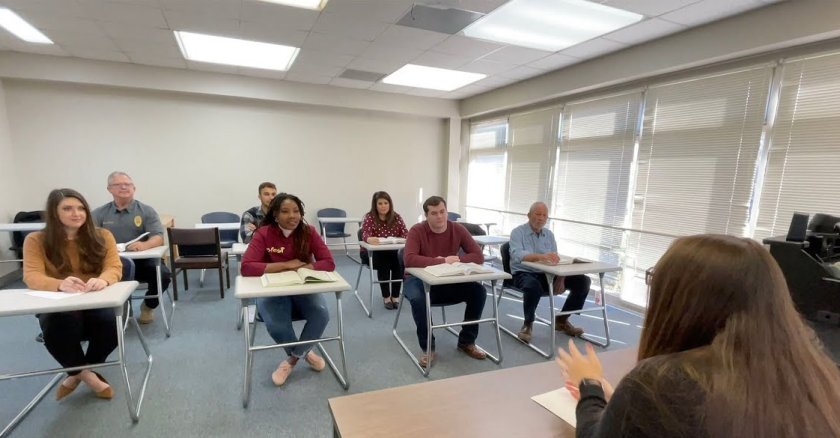As these numbers spike — raising concerns about governments' ability to deliver essential services — most of the attention in public administration circles has been on how to attract Gen Z and other younger workers to careers in public service. That’s certainly a desirable goal, but there’s a largely untapped talent resource at the other end of the age spectrum: governments’ own retirees.
The pool of retirees from all levels of government is huge. In fiscal 2022, more than 2 million former federal employees were receiving pension benefits, while the National Association of State Retirement Administrators reports that there are 10.2 million retirees and beneficiaries from state systems and another 1.8 million from local governments.
Until the pandemic, there was a long-term trend for older workers to defer their retirement and work into their late 60s and even 70s. That was beneficial to organizations both public and private: Studies show that retirement-age workers are better at solving problems and more capable of working with little or no supervision. But when COVID-19 hit the U.S. economy, many of those older workers lost their jobs or were forced to retire. Now, however, there is evidence that the trend to defer retirement has restarted and is stronger. Workers who lost their jobs need the income. Many simply miss working. (This is covered in more depth in my most recent book, Older Workers Ready to Hire.)
Yet there are major barriers and disincentives preventing governments from effectively tapping this resource. Most prominent are prohibitions against “double-dipping” — collecting both a pension and a paycheck from the same jurisdiction. It’s time to re-examine these policies, which date from a very different era when workers were seen as interchangeable (physical strength was more important than job knowledge), making younger, lower-paid workers preferable.
That issue is among those recently taken up by the Washington-based Convergence Center for Policy Resolution in a policy blueprint for reforming the federal civil service. Many of the research organization’s recommendations for the federal workforce are just as applicable to state and local governments. They were refined over more than a year with input from a roundtable of civil service experts. (I was a participant.)
The Convergence group that focused on retiree hiring concluded that “talent gaps across agencies arise at all level of experience, and sometimes occur with positions that require a level of technical expertise that may be difficult … to fill with entry-level hires or mid-career transfers from other sectors.” Its core recommendation is that the federal government re-examine double-dip policies and other financial disincentives for retirees.
Versions of the double-dip penalty exist in virtually all public pensions; in some states the penalties apply to government contractors as well. While those policies have gained broad acceptance, it’s a flawed argument. Pension benefits have already been earned for the years of service prior to an employee’s retirement, while any salary pays for their work effort going forward.
A new hire or promoted employee will usually earn a lower salary but would not have the same job knowledge. A re-hired retiree is likely to be more productive and require little or no training. Moreover, if the retiree works as a gig or contract employee, their compensation would not include the standard benefits of regular employment. And of course some would still earn a salary from another employer, such as a contractor.
Elected officials will need to decide if existing laws and pension plan provisions are serving the interests of their governments. Pension plan provisions and other rules governing retirees can be modified to open new alternatives. That is happening in a few places. Tennessee, for example, has created several return-to-work programs, although there are limits on the number of days retirees can be on the job. Philadelphia changed its rules and introduced a hybrid pension plan to encourage non-uniform employees to work longer at age 60 and 62.
A possibility that does not require new legislation is for state and local agencies to hire federal retirees, and vice versa. Double-dip penalties would not apply. Each level of government has agencies with very similar missions — labor, crime investigations, emergency response, public health, corrections, finance, parks and so on. Retirees from one level of government would need time to understand the new policies, but the day-to-day duties and required skills would be similar.
Another idea suggested in the Convergence Center’s Blueprint for Action is bringing retirees back to serve as trainers or coaches for young employees. The Federal Law Enforcement Training Center employs retirees as trainers, a practice that proved to be important after 9/11. Another federal idea is the “dual-compensation waiver,” allowing agencies to identify specific jobs where vacancies are problematic and permit hiring retirees, subject to HR review.
A related approach would be to identify occupations or job families where there is a cross-government problem (IT jobs, for example) and authorize blanket waivers. The authorization could be temporary, subject to periodic review. Yet another federal idea is creating a “reserve corps” of retirees who would be available in a crisis. The FBI and the intelligence community have such backup groups with specific skills.
And as the blueprint suggests, it might be worthwhile for an agency to stay in touch with retirees and occasionally invite them to luncheons or other meetings to assess their satisfaction with retirement. Studies show many retirees miss the challenges and social contacts with co-workers.
Many existing civil service systems have seen little change since the end of World War II, when average life expectancies were shorter and the pool of skilled retirees was a fraction of what we have today. More governments should be thinking about ways to make the most of this corps of experienced workers, many of whom are eager to continue contributing.
Governing’s opinion columns reflect the views of their authors and not necessarily those of Governing’s editors or management.
Related Articles














